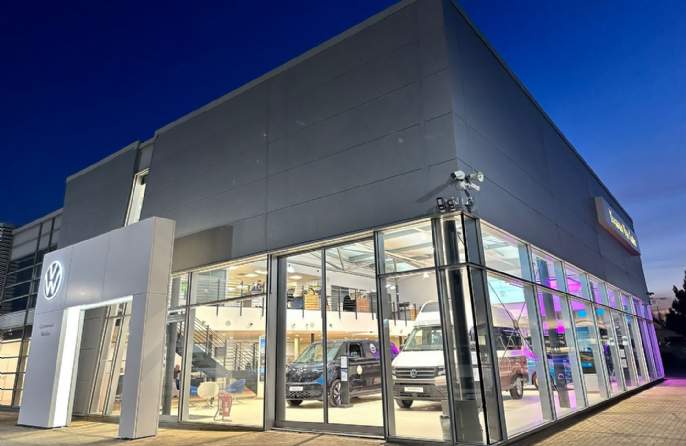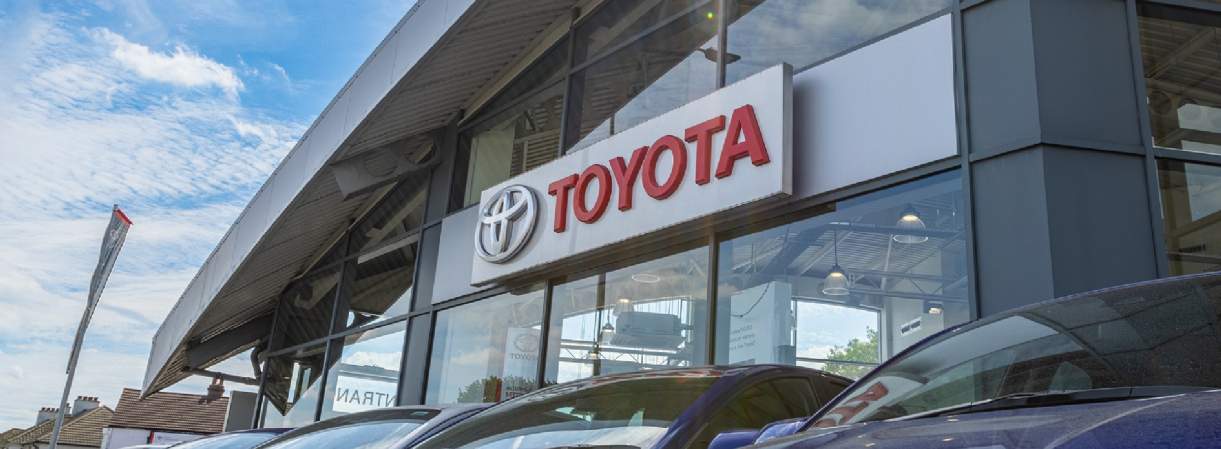The innovative nature of the Automotive sector transcended the headwinds in 2023 and looks set to forge ahead in 2024, empowered by a combination of new products and players. This, combined with the improving fiscal conditions, shall likely deliver an overhang of opportunity throughout 2024.
There were a number of challenges for the automotive sector throughout 2023, but the key performance indicators show some cause for celebration, particularly as UK car production surged towards the end of the year. Finally, supply is starting to work towards a point of equilibrium with demand, with a further positive outlook anticipated for 2024. As the supply chain challenges slowly start to redress, a more comprehensible path towards electrification can be established. Progression in UK battery electric vehicle (BEV) production was given a further boost in the eleventh hour of 2023 with the deferral of tougher rules of origin for batteries and EVs traded between the UK and EU. This was reflected in the number of new vehicles on UK roads in March 2024, which was up 10.4% year-on-year, the best performance for the month since 2019 and the 20th month of consecutive growth, according to the Society of Motor Traders & Manufacturers (SMMT). This was largely driven by fleet registrations and business orders. BEV registrations have somewhat stalled, with 3.8% year-on-year growth. A lack of government incentives have been cited as the main cause. BEVs still hold a 15.2% market share. Again, whilst this looks positive at face value, a large number of these registrations are driven by fleet orders and salary sacrifices.
The zero-emission vehicle (ZEV) mandate has now come into force in the UK from January 2024 and the future of eMobility starts now.
This requires 22% of all new vehicles sold by manufacturers to be zero emission, incrementally rising to 80% by 2030, and a full ban of new petrol and diesel-powered vehicles is set for 2035. Auto Trader predicts a BEV price war to unfold in 2024, driven by the entrance of Chinese EV manufacturers to the market. For every unit sold by a manufacturer over the 22% threshold, a £15,000 fine per unit can expected. Pure BEV manufacturers will hold a strong advantage given their output is 100% zero emission. Furthermore, they can sell surplus credits to manufacturers struggling to meet their quotas, enabling BEV manufacturers to down price their products. This, combined with the Chinese battery production capabilities, puts these manufacturers in a strong position. Market growth has already been evidenced, with the Shenzhen-based BYD (Build Your Dreams) overtaking Tesla as the top BEV seller.
The impact on dealers and property
Figure 1 shows the evolving automotive ecosystem and its moving parts. Whilst key volume brand Volkswagen holds the top market share spot, there has been a movement amongst other OEMs (original equipment manufacturers). Mercedes has lost market share in its first year of implementing an agency model, a new system whereby the customer places the order directly with the OEM (usually) and their dealer partner is simply the conduit for delivery of the product to the consumer as well as managing the aftersales relationship and servicing care. This does not necessarily herald a warning sign for this model, rather, it shows that in tough environments, there will likely be integration challenges initially. The agency model will inevitably require dealers to display fewer vehicles in their dealership showroom. There are reports of some Mercedes showrooms reducing their display vehicles from 20 plus, down to seven or eight models. This opens a window of opportunity, with some dealers opting to dual franchise and sign partnerships with some of the new EV market entrants. This is expected across other OEMs, where significant network consolidation is expected, for example, with the Stellantis brands. Audi seems to have benefited from the decline in Mercedes’ market share in 2023, given their similar model characteristics, growing to 7%. Further consolidation is expected, with several dealership properties likely to come to the market. Renault has had the second largest growth in market share, now up to 2.14% as they look to open a new flagship West London facility in Brentford. Penske-owned Sytner remained the top dealer by turnover at just under £5 billion, and despite the economic headwinds, most dealers produced healthy balance sheets. There was, however, further mergers and acquisitions both domestically, with Vertu Motors acquiring Southwest dealer group Helston Garages, and internationally, with both Pendragon and Lookers (two of the largest dealer groups) being acquired by North American and Canadian investors, respectively. In terms of the used car market, falling values of used vehicles have presented challenges to used car supermarkets. Online pioneer Cazoo has brought all of its sites to market as they attempt to become an online used car marketplace, and equally, Motorpoint has now halted its expansion plans following strong performance in recent years. Cinch, which falls under the same ownership as Marshall Motor Group and British Car Auctions (BCA) in the automotive supergroup Constellation, also posted losses.
Car Dealership Investment Market
Lower volumes of car dealership investment transactions were not simply due to a lack of purchasers but more so due to the reduced availability of stock being brought to the market. Most stock that was marketed during 2023 is now sold or under offer. This level of transactions is the lowest since the pandemic in 2020 and displays similar activity levels to 2015, and 2010.
Purchases of car dealership investments over the last year have been led by private buyers accounting for 50% of all transactions. Car dealer groups buying in their leasehold interests were the second largest purchasers of all car dealership assets (42%) whilst investment fund buyers lagged behind with 8% of transactions throughout the year, many of which were also combined with other asset classes such as industrial.
Whilst funds have not been actively purchasing in the market, they have been the net sellers, accounting for 92% of all sales. Transaction levels within the sector have been influenced by the rising interest rates peaking at 5.25%, and the high inflation at the beginning of 2023. These influences played a part in impacting the market, with private debt-backed buyers pressing yields out from 2022 levels. As shown in - Table 1, the car dealership investment market has a medium position in the commercial property sector, with sentiment likely to remain stable for the foreseeable future. Car dealership movement trends can regularly be comparable to the strong-performing industrial and retail warehousing sectors, possessing similar property characteristics to both asset classes.
With most of the investment stock in 2023 being sold by funds, much of this has been long income stock, with 71% of the stock having a term certain of over ten years. This has therefore seen prime yield movement being the most affected, with secondary yields holding relatively steady in comparison. Due to this, the gap difference between prime and secondary yields has shrunk. This therefore lends itself to buyers being able to acquire long-let income at a reduced yield compared to the long-term average.

Volkswagen Exeter Acquisition
Key Points
1. With supply returning, albeit slowly, and demand remaining high, significant growth for both the new and used car market is expected in 2024 & 2025. 1.903 million new cars were registered in 2023, an increase of 17.9%. 1.974 million registrations are forecasted in 2024 and 2.038 million in 2025 (Source; SMMT)
2. Car dealership property sits at the forefront of the transition to electrification, housing the exciting new market entrants fuelling the technological shifts, with well over 100 BEV models now available in the UK and the millionth EV registered in January.
3. Car dealers have robustly weathered the worst of the economic conditions, with inflation and interest rates peaking.
4. Consolidation remains a prominent theme, with OEMs reducing their retail outlets as well as a significant amount of ongoing M&A activity. This allows opportunities for either a repurposing of existing property to house multiple franchises, or the ability to unlock value through alternative uses.
5. Car dealership assets have a low vacancy rate of approximately 3.0%, well below traditional commercial property sectors.
6. Car dealerships have similar performance characteristics to the strong-performing retail warehousing and industrial asset classes and tend to occupy main road frontages.
7. Car dealership rents are often inflation-linked with strong tenant covenants. The dealers are the conduit of the OEMs for their goods and services and often provide strong support.
